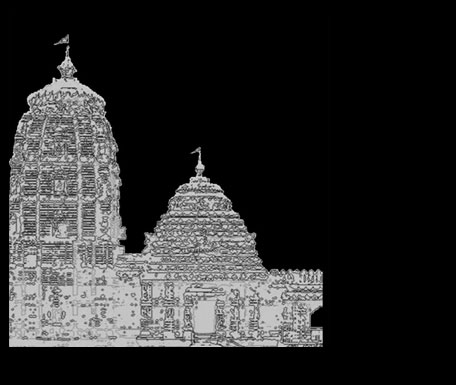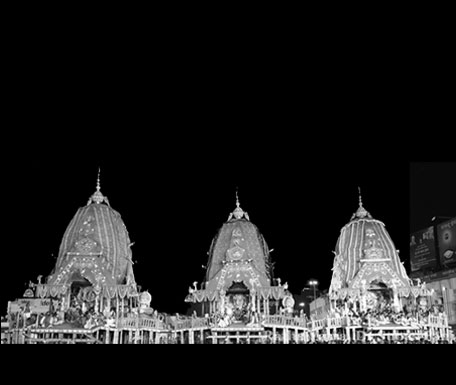





Maha Shivaratri or the Great Night of Lord Shiva is a festival celebrated in reverence of Lord Shiva once in a year on the Krishna Paksha Chathurdasi i.e. 14th night new moon of Hindu calendar month of Magha as per Amavasya - ant month in South Indian calendar. As per poornima ant month calculation, the day is Krishna Paksha chaturdasi of Hindu calendar month of Phalgun in North Indian calendar, which falls in February or March as per the Gregorian calendar. In both the calendars it is naming convention of lunar month which differs. However both North Indians and South Indians celebrate Maha Shivaratri on the same day.
The festival is celebrated by devotees by all day fasting and with all-night vigil (Jagaran) and chanting of Lord Shiva mantra OM NAMAH SHIVAYA, OM NAMO BHAGAVATE RUDRAYA, OM TATPURUSHAAYA VIDMAHEE MAHADEVAYA DEEMAHI TANO RUDRA PRACHODAYAT. Chanting or hearing of Mahamrityunjaya mantra on this auspicious night gives the benefit of life's highest good.
According to Shiva Purana, Mahashivaratri rituals incorporate bathing Shiva Linga once in 3 hours with water, milk/ curd, honey, ghee/butter, sugar powder, coconut water. Application of vermilion paste to Shivalanga after the bath, offering of fruits, offering incense sticks, lighting of lamp and offering of bael (Wood apple) leaves. The devotees take bath at sunrise preferably at holly water sources (Rivers), wear clean clothes as a purification rite and carry water to the temple to bath Shivalanga and chant Om Namah Shivaya with devotion to free themselves from all sins.
Mahashivaratri is associated with several mythological legends.
LEGEND I - STORY OF KING CHITRABHANU
In Shanti Parva of Mahabharat, Bhisma while resting on bed of arrows narrated that once the king Chitrabhanu who ruled over the Jambudvipa was observing fast with his wife, it being a day of Mahashivaratri. The sage Ashtavakra came to vist the king and inquired about the fasting by the king. King Chitrabhanu who had the gift of remembering the incident in previous birth narrated that he was a hunter in Varanasi and his name was Suswara in the past birth. He was living by killing and selling birds and animals. One day after a daylong hunting he lost his way in the forest. With approach of darkness he was scared and climbed a tree to take shelter from wild animals and spend the night. The tree happens to be a Bael tree. Exhausted, anxious and worried about his poor wife and children he sat on the branch of the tree shedding profuse tears. To keep awake he engaged himself plucking the bael leaves and dropping on the ground not knowing that they were falling on a Shivalinga below the tree. Next morning he could find his way home and returned after selling his kills and buying some food for the family. But the moment he was about to break his fast a stranger came seeking for food. Suswara served food to the stranger first and then had his own. Later at the time of his death Suswara saw two messengers of Lord Shiva who were waiting to conduct his soul to the abode of Lord Shiva. It was then he was told that his tears on that night washed the Lingam, the leaves he dropped adorned the Lingam and the fast he observed completed the worship of Lord Shiva which earned him the blessings of the Lord. That was the fourteenth day of dark fortnight of Phalguna and thus considered auspicious. It is believed that rituals of bathing the Lord, worshipping with devotion, keeping awake and fasting on this day pleases the Lord the most.
LEGEND II - SAMUDRA MANTHAN
Asuras and Devas formed an alliance to jointly churn the ocean for the nectar of immortality and to share it among them. Mount Mandara was used as churning rod and Vasuki, the king of Sepant was used as churning rope. Sura or Varuni (Goddess and creator of wine ), Apsaras (divine nymphs) Kaustubha ( a rare diamond) Uchhaishravas ( the divine white horse) Kalpavriksha (the wish granting tree) Kamadhenu (the wish fulfilling cow) Airavat (the white elephant) Lakshmi (the Goddess of wealth) emerged out of churning and were divided between Asuras and Devas. During this churning Haala-Hala the deadly pot of poison also came out of the ocean. This terrified the Gods and Demons as it would wipe out the entire creation. Gods approached Lord Shiva for help and protection as it is he who could swallow it without being affected. Out of compassion Lord Shiva swallowed it and held it at the throat. But the poison was so potent that it changed the colour of his throat and Lord Mahadeva's neck looked blue. Thus Lord Shiva was called Nilakanta. Gods kept a vigil performing dance and playing music to keep Shiva awake so that the poison does not affect him. This was the day which is being celebrated as Mahasivarathri the night on which Lord Shiva saved the world from destruction.
LEGEND III - LEGEND OF SHIVA LINGA
According to Kurma Purana, Vayu Purana and Siva Purana once, Bramha and Vishnu were fighting over each other power to prove their Supramacy. Horrified by the intensity of the fight other Gods requested Lord Shiva to intervene. Lord Shiva assumed the form of flaming Shivalinga in between Brahma and Vishnu and challenged both of them by asking them to measure the gigantic linga. Brahma and Vishnu decided to find one end each to establish supremacy over the other Lord Brahma took the form of swam and went upwards and Vishnu took the form of Varaha and went downwards towards other end. Both travelled thousands of miles but could not reach the cosmic end.
Exhausted Brahma on his journey upwards met 'Ketaki' flower and made 'ketaki' assent to lie that he had seen the top of the column. Accompanied by his accomplice Brahma confronted Vishnu and asserted that he had indeed discovered the origin of the cosmic column where the flower had previously resided. At this point the central part of the pillar split open and Shiva revealed himself with full glory. Overawed both Brahma and Vishnu bowed before him and accepted Lord Shiva's supremacy. Lord Shiva explained that both of Brahma and Vishnu were born out of him and they were separated into three aspects of divinity. Lord Shiva cursed Brahma for having told lies that no one would ever pray him and banned Ketaki flower from being used as any offering in any worship. This was the Fourteenth day of dark fortnight of month of Phalgun when Shiva first manifested in form of Linga and considered the most auspicious night. It is believed that worshipping of Lord Shiva on this day bestows one with happiness and prosperity.
Shivaratri to believers also marks the wedding day of Lord Shiva and Parvathi. Married women on this day pray for wellbeing of their husband and son and unmarried girls pray to get ideal husband like Lord Shiva. Some believe that on this auspicious night Lord Shiva performed the "TANDAVA" the dance of primal creation preservation and destruction. There are also other legends like Legend of Ganga, marriage of Shiva and Sakti etc to convey the significance of Mahashivaratri celebrations.
Lord Shiva is known by several names. The Shiv Purana lists 1008 names. Each of the names signifies certain attributes of the Lord. Ashutosh (one who fulfils wishes instantly), Bhairav (Lord of terror), Bholanath (kind hearted Lord), Bhudeva (Lord of the earth), Chandra Prakash (one who has moon as crest), Devadeva (Lord of the Lords), Digambar (one who has the sky as the dress), Durjaya (unvanquished), Gangadhar (Lord of River Ganga), Kailasadhipati (Lord of mount of Kailash), Lingaraj (Lord of Lingas), Mahadeva (Greatest of God), Mahamrityunjaya (Great victor of death), Maheswar (Lord of Gods), Nataraj (King of dancing), Omkara (Creater of Om), Pashupati (Lord of all living beings), Sadasiva (Eternal God), Sambhu (Abode of Joy), Trilochana (who has 3 eyes), Umapati ( Consert of Uma), Visweswar ( Lord of the Universe) , Veerabhadra (Supreme Lord of neither world) are some of the well-known names by which Lord Shiva is worshipped by devotees.
The legends and rituals connected to Shivratri festival have great significance. The ceremonial bath of the Lord represents purification of the soul, applying of vermilion represent virtues, offering of food are for Longevity and lighting of lamp signifies attainment of knowledge. The forest in the legend is the mind where negativities roam. Just as the hunter kills wild animals, a spiritual seeker tries to overcome lust, anger, greed, infatuation, jealousy and hatred. The name of hunter is Suswara which signifies mental purity, the purity of intent& speech. Keeping awake is the symbolic of the kind of awareness and oneness of purpose that a spiritual aspirant needs to reach the goal. Lord Shiva is the supreme consciousness. Lord Shiva is one who destroys what is impure for a new creation which is pure & divine. Lord Shiva destroys for regeneration. Lord Shiva is Adi Guru from whom the knowledge originates. He is the most compassionate and kind who could swallow even poison to save the creation. Mahashivaratri is the night when northern hemisphere of the planet is positioned in such a way that there is a natural upsurge of energy in a human being.
Let us pay and worship Lord Shiva the Greatest of the God with total devotion and spiritual discipline and invoke his blessing.